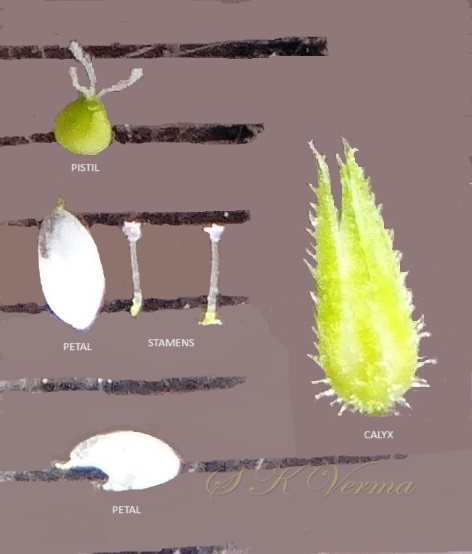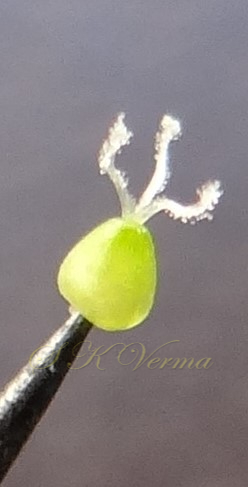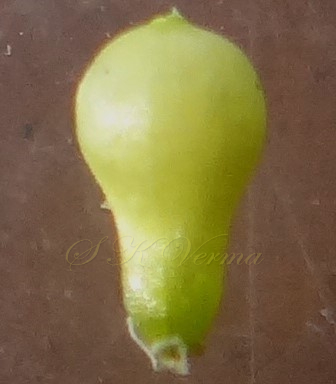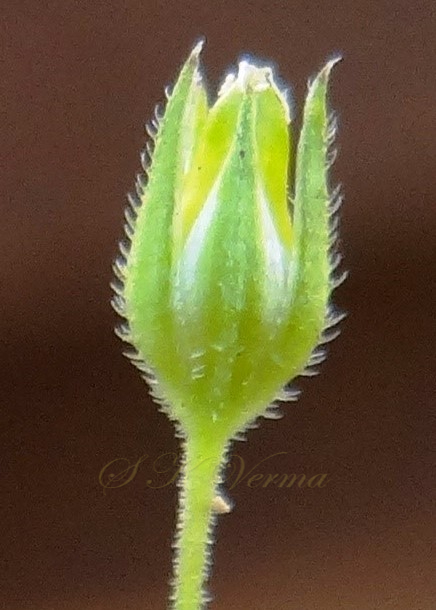ARENARIA
Arenaria Ruppius ex L., Sp. Pl. 1: 423. 1753; Gen. Pl. ed. 5. 193. 1754; Boiss., Fl. Or. 1: 689. 1867; Edgew. & Hook. f. in Hook. f., Fl. Brit. Ind. 1: 235. 1875; Hartman et al., Fl. North Amer. @eFloras. org vol. 5; Zhengyi & Wagner, Fl. China @eFloras. Org 6: 40; Ghazanfer & Nasir, FL. Pak. @ eFloras. org p. 5.
Herbs, annual or perennial, rarely biennial. Stems erect or rarely creeping, often caespitose, glabrous or glandular hairy. Leaves opposite, rarely whorled, linear or ovate, elliptic, obovate or orbicular, usually flat, margin entire; blade 1- or 3-5-veined. Inflorescence terminal or axillary open cymes or flowers solitary; bracts small, paired, foliaceous. Flowers actinomorphic, bisexual, pentamerous, hypogynous, white. Pedicels erect or ascending to reflexed in fruit. Sepals 5 (or 4), free, 1(-3) nerved, apex entire, rarely emarginate. Petals 5 (or 4 or sometimes absent), usually entire, white. Stamens usually 10, filaments free. Ovary 1-locular, ovules numerous; styles generally 3. Capsules ovoid, obovoid or globose, usually shorter than persistent calyx, 6 (or 3)-valved. Seeds reinform to subreniform, smooth, tuberculate or papillose.
182 species
Arenaria serpyllifolia
Arenaria serpyllifolia L., Sp. Pl. 1: 423. 1753; Boiss., Fl. Or. 1: 689. 1867; Edgew. & Hook. f. in Hook. f., Fl. Brit. Ind. 1: 239. 1874; Blatter & Fernandez, J. Bomb. Nat. Hist. Soc. 36(4): 959. 1933; Collett, Fl. Siml. ed.2: 53. 1921 (Reprint 1980); Sharma & Kachroo, Fl. Jammu (Illustr.) 2: t. 30. 1983; Dhaliwal & Sharma, Fl. Kullu Dist. 152. 1999; Kaur & Sharma, Fl. Sirmaur. 154. 2004; Fl. China @ eFloras.org 6: 45; Fl. Pak. @ eFloras.org p. 6.
Annual herbs. Stems erect to decumbent, ascending, profusely branched, sprawling, slender, scrabid with or without glandular hairs or glabrous, 3-40 cm, internodes terete, retrosely pubescent throughout. Leaves opposite, often connate basally, with herbaceous or scarious sheath, usually sessile, proximal leaves petiolate, petiole 1-4 mm; blades (1-) 3-5-veined, elliptic to broadly ovate, the lower usually obovate to spathulate, 3-7 mm x 1.5-4 mm, herbaceous, margin flat, ciliate especially distally, apex acute to acuminate, sparsely minutely pubescent or glabrous; both surfaces especially veins scabrid, adaxial more than abaxial; axillary leaf clusters absent. Inflorescence terminal, open, leafy, few to many dichasial and monochasial cymes; sometimes flowers solitary axillary. Pedicels 1-12 mm, erect or ascending in fruit, retrosely pubescent. Bracts herbaceous, ovate. Flowers 5-6 mm across, actinomorphic, bisexual, pentamerous, hypogynous, white. Sepals 5, 3-4 mm long, lanceolate to ovate-lanceolate, 3-veined, not keeled, apex acute to acuminate, scabrid, especially on veins, +/- glandular or glabrous, margin scarious. Petals 5, white, less than the length of sepals, 1.75-2 mm x 1 mm, obovate, apex obtuse to rounded, entire, never notched. Stamens 5, shorter than sepals, filaments ca. 1 mm long. Ovary ovoid, 1-locular, many ovules, free central placentation; styles 3, linear. Capsules equal or little shorter than sepals, 3-3.5 mm, ovoid to cylindric-ovoid, usually rounded and thickened at base, narrow above (flask-shaped), opening by 6 valves. Seeds 10-15, ashy black, reniform, plump, 0.4-0.6 mm, not shiny, tuberculate with raised papillae or narrow winged.
Common Names: Thyme-leaved Sandwort
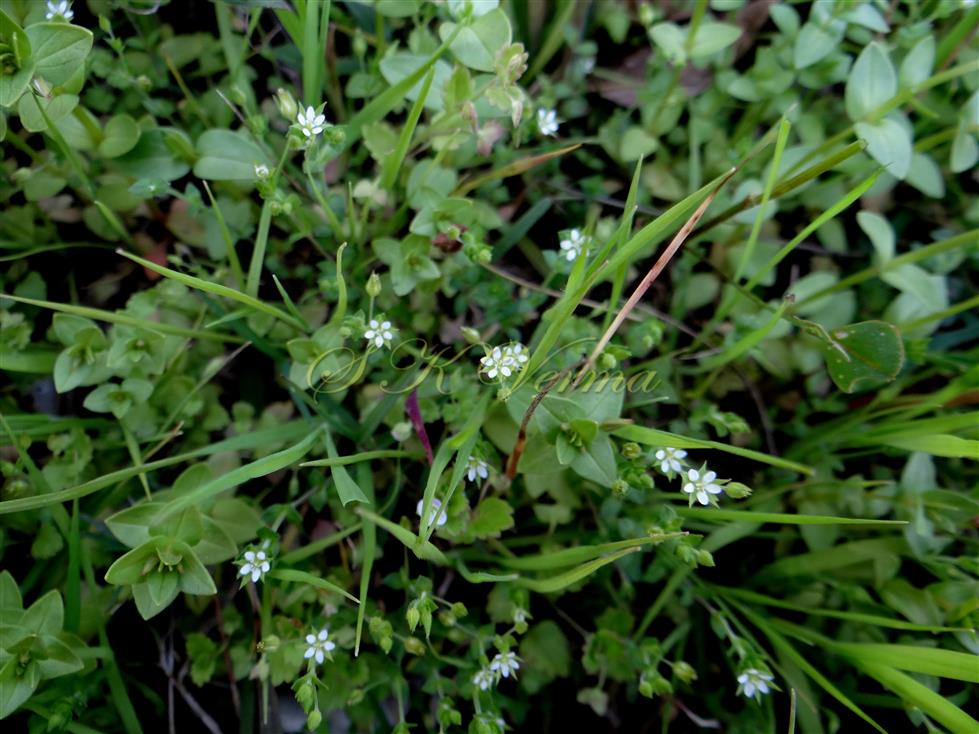
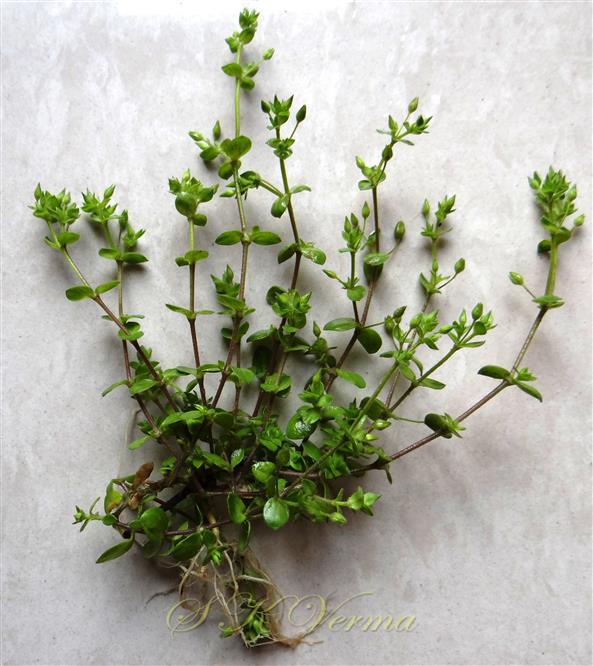
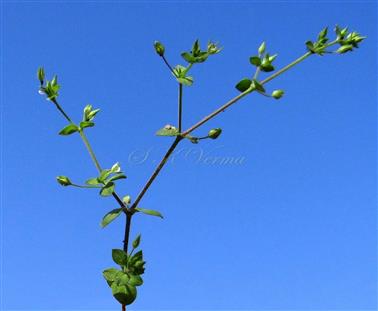
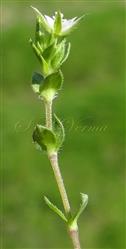
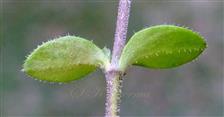
.jpg)
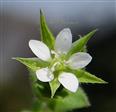
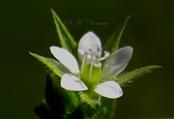










.jpg)


